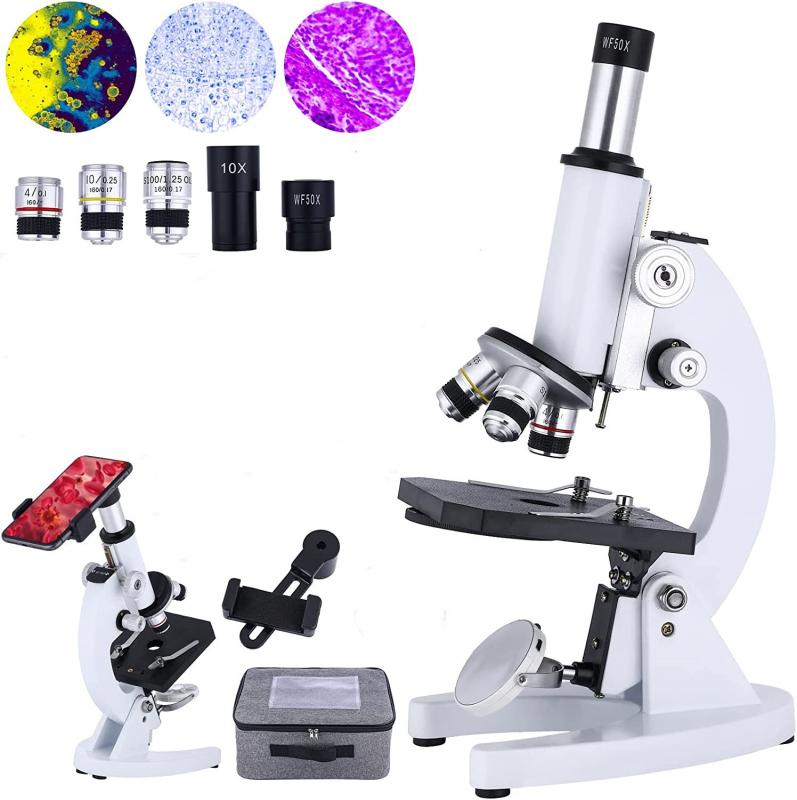How Does Yeast Look Under A Microscope ?
Under a microscope, yeast appears as small, single-celled organisms that are oval or spherical in shape. They typically range in size from 3 to 40 micrometers in diameter, depending on the species. Yeast cells have a distinct cell wall and a nucleus, which contains their genetic material. They also have other organelles, such as mitochondria and ribosomes, which are responsible for various cellular functions. When viewed under a microscope, yeast cells may appear as individual cells or as clusters, depending on the growth conditions and the stage of the yeast's life cycle. Overall, yeast is a fascinating organism to study under a microscope, and its unique properties have made it an important model organism for scientific research.
1、 Morphology of yeast cells
Morphology of yeast cells refers to the physical appearance of yeast cells under a microscope. Yeast cells are unicellular organisms that belong to the fungi kingdom. They are typically spherical or oval-shaped and range in size from 3 to 40 micrometers in diameter. Yeast cells have a cell wall that surrounds the cell membrane, which gives them their characteristic shape.
Under a microscope, yeast cells appear as small, round or oval-shaped cells that are often seen in clusters or chains. They have a distinct cell wall that is visible as a thin, dark line surrounding the cell. The cytoplasm of the cell appears as a light-colored area within the cell wall. Yeast cells also have a nucleus, which is visible as a dark, round structure within the cytoplasm.
Recent studies have shown that yeast cells can exhibit a wide range of morphological variations depending on their growth conditions. For example, yeast cells grown in nutrient-rich media tend to be larger and more elongated than those grown in nutrient-poor media. Additionally, yeast cells can undergo changes in shape and size during different stages of their life cycle, such as during budding or mating.
In conclusion, the morphology of yeast cells is characterized by their spherical or oval shape, distinct cell wall, and visible nucleus. However, recent research has shown that yeast cells can exhibit a wide range of morphological variations depending on their growth conditions and life cycle stage.

2、 Cellular structures of yeast
How does yeast look under a microscope? Yeast is a single-celled organism that belongs to the fungi kingdom. When viewed under a microscope, yeast cells appear as small, oval-shaped structures with a diameter of about 5-10 micrometers. The cell wall of yeast is visible as a thin, transparent layer surrounding the cell. Inside the cell, various cellular structures such as the nucleus, mitochondria, and vacuoles can be observed.
The latest point of view on the cellular structures of yeast is that they are highly dynamic and responsive to changes in their environment. For example, yeast cells can alter the size and number of their mitochondria in response to changes in nutrient availability. Additionally, recent studies have shown that yeast cells can form complex structures such as biofilms, which are communities of cells that adhere to surfaces and are resistant to antibiotics.
Overall, the cellular structures of yeast are fascinating and continue to be an area of active research. By studying yeast cells, scientists can gain insights into fundamental biological processes such as cell division, metabolism, and gene expression. Additionally, yeast is widely used in biotechnology and industrial applications, making it an important organism for both basic and applied research.

3、 Staining techniques for yeast visualization
Staining techniques for yeast visualization are commonly used to observe the morphology and structure of yeast cells under a microscope. Yeast cells are typically small and difficult to see without staining, so various staining techniques have been developed to enhance their visibility.
One common staining technique is the use of methylene blue, which stains the cell walls and cytoplasm of yeast cells. This technique allows for the observation of the shape and size of yeast cells, as well as the presence of any budding or other cellular structures.
Another staining technique is the use of Gram staining, which is commonly used to differentiate between different types of bacteria. However, it can also be used to visualize yeast cells. Gram-positive yeast cells will appear purple under the microscope, while Gram-negative yeast cells will appear pink.
In addition to staining techniques, other methods for visualizing yeast cells under a microscope include phase-contrast microscopy and fluorescence microscopy. Phase-contrast microscopy uses differences in refractive index to enhance the contrast between the yeast cells and their surroundings, while fluorescence microscopy uses fluorescent dyes to label specific structures within the yeast cells.
Overall, staining techniques and other microscopy methods have greatly improved our ability to observe and study yeast cells. With these techniques, we can better understand the structure and function of yeast cells, as well as their role in various biological processes.

4、 Yeast growth and reproduction
Yeast is a single-celled microorganism that belongs to the fungi kingdom. It is commonly used in baking, brewing, and fermentation processes. When viewed under a microscope, yeast appears as small, oval-shaped cells that range in size from 3 to 40 micrometers. The cells have a distinct cell wall and a nucleus that is visible under high magnification.
Yeast cells reproduce asexually through a process called budding. During budding, a small protrusion forms on the surface of the yeast cell, which eventually grows and separates from the parent cell to form a new cell. This process allows yeast to rapidly multiply and grow in favorable conditions.
Recent studies have shown that yeast cells are not as simple as once thought. They have complex regulatory networks that allow them to respond to changes in their environment and coordinate their growth and division. Yeast cells also have the ability to form biofilms, which are communities of cells that adhere to surfaces and protect themselves from environmental stressors.
In conclusion, yeast cells are small, oval-shaped cells that have a distinct cell wall and nucleus. They reproduce asexually through budding and have complex regulatory networks that allow them to respond to changes in their environment. The latest research has shown that yeast cells are more complex than previously thought and have the ability to form biofilms.






































